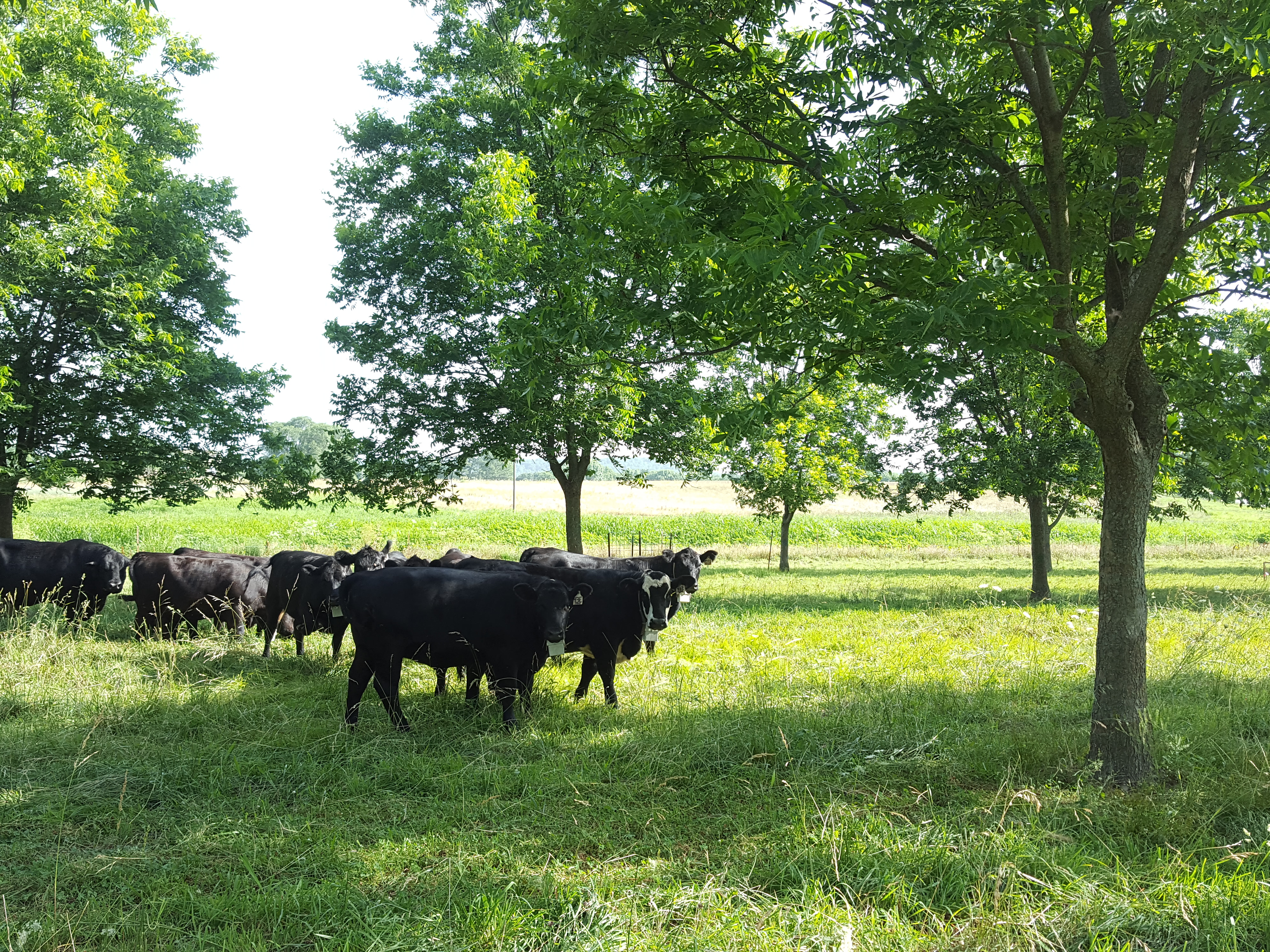Sept. 25, 2020
Realistic expectations, patience keys to silvopasture success
By the U of A System Division of Agriculture
Fast Facts:
- Be realistic, start small
- “Forested areas are forested for a reason”
- Cattle can be put to good use in converting forested areas to pastureland
(488 words)
(Download this story in MS Word format here.)
FAYETTEVILLE, Ark. — Arkansas is a state blessed with a wide spectrum of agricultural potential, from the forests of the Ozarks and Ouachitas to the fertile rice fields of the Delta, and the vast pasturelands in between. For some landowners, the possibility of using their land for an increasingly broad array of agricultural uses is a temptation worth considering.
Dirk Philipp, associate professor of animal science for the University of Arkansas System Division of Agriculture, said landowners weighing the benefits of converting forestland — either native deciduous forest or pine tree stands — to pastureland need to have a strategy in mind to achieve a desirable outcome.
“Some landowners, in particular those who acquired additional forestland are asking how the two land use forms could be combined or used simultaneously to expand grazing grounds,” Philipp said. “There seems to be interest in southern Arkansas to use thinned, but not fully grown-out pine tree plantations for establishing pastures underneath.”
The key to success in creating silvopastures — areas of integrated pastures and forestland — is to be realistic, Philipp said.
“And start small,” he added.
“Establishing silvopastures of any kind will take an investment in time and money,” Philipp said. “Part of the costs can be offset with timber sales from thinning, but it is certainly best to have a budget in mind. Forage, if established in silvopastures, may not be nearly as productive as in open, dedicated pasture areas. Forestland is forestland for a reason, so establishing common forages may take some dedication and creativity.”
Converting large tracks into grazeable land is pricey from the standpoint of equipment rental for removing trees, establishing forage, and keeping soil fertility in check, Philipp said.
“Start in locations that are easily accessible by your livestock, can provide a water source, and make fencing possible,” he said. “Test a few forages, including annual and perennial grasses and perhaps annual legumes.”
Rather than becoming single-minded in a conversion effort, landowners should consider multiple uses for thinned areas, Philipp said.
“Depending on the nature of the wooded area and resulting canopy sizes after thinning, the emphasis may be more on wildlife habitat than forage production if it appears that the site is not suited for forage production,” he said. “There’s value in native shrubs, especially in hardwood forests, to provide understory for wildlife besides erosion control and food sources for game.”
Cattle can also be helpful friends in your conversion effort, Philipp said.
“Placing mineral blocks in understory may help get rid of unwanted brush,” he said. “Cattle that are allowed to escape the summer heat by loafing in wooded areas may even provide some nutrients from the manure they bring in.”
Finally, Philipp said landowners should make use of the many resources available from institutions including the Natural Resources Conservation Service, which often provide cost-share programs for converting wooded areas into grazeable land, and the cadre of foresters, forage agronomists, and livestock specialists at the Division of Agriculture.
To learn more about extension programs in Arkansas, contact your local Cooperative Extension Service agent or visit www.uaex.uada.edu. Follow us on Twitter at @UAEX_edu.
About the Division of Agriculture
The University of Arkansas System Division of Agriculture’s mission is to strengthen agriculture, communities, and families by connecting trusted research to the adoption of best practices. Through the Agricultural Experiment Station and the Cooperative Extension Service, the Division of Agriculture conducts research and extension work within the nation’s historic land grant education system.
The Division of Agriculture is one of 20 entities within the University of Arkansas System. It has offices in all 75 counties in Arkansas and faculty on five system campuses.
Pursuant to 7 CFR § 15.3, the University of Arkansas System Division of Agriculture offers all its Extension and Research programs and services (including employment) without regard to race, color, sex, national origin, religion, age, disability, marital or veteran status, genetic information, sexual preference, pregnancy or any other legally protected status, and is an equal opportunity institution.
# # #
Media contact:
Ryan McGeeney
Communications Services
University of Arkansas System Division of Agriculture
Cooperative Extension Service
(501) 671-2120
rmcgeeney@uada.edu
